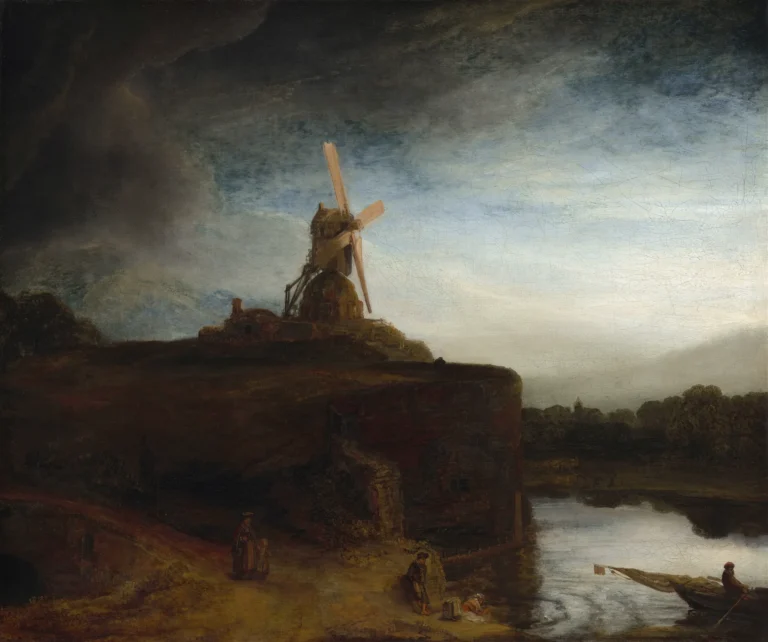The Mill
Created between 1645 and 1650, Rembrandt's The Mill features a striking windmill set against a dynamic sky, originally misinterpreted due to discolored varnish. The painting captures various lively activities in the foreground, illustrating the interaction between people and their environment. After its significant restoration in the late 20th century, the artwork revealed a reimagined vibrant atmosphere, showcasing Rembrandt’s skill in landscape artistry and its emotional depth, solidifying its reputation as one of his masterpieces.
Mid-17th Century (Approx. 1645 - 1650)
About the Artwork
The story of The Mill is intertwined with Rembrandt's own life experiences. It is believed that he was inspired by his father's windmill located in Leiden. This personal connection adds to the intrigue of the piece, where the windmill serves as a protective guardian for the surrounding landscape and its inhabitants. The various activities depicted in the foreground, such as a woman washing linen and a man maneuvering a barrow, depict a sense of everyday life during Rembrandt’s era. These elements render the work not only a portrayal of nature but also an intimate observation of human interactions. The painting's journey through time, including its restoration from 1977 to 1979, highlights the challenges faced in maintaining the integrity of historical art while uncovering the true artistry that the artist intended.
Did You Know
Liked what you see? Add it to your collection.
Enjoyed reading? Share it.
... continued
The Mill
The Mill is a notable painting by the Dutch baroque artist Rembrandt van Rijn, created around the mid-17th century, with the exact dates often cited as between 1645 and 1648 or approximately 1650.
Key Features
The painting features a windmill as its central focus, set against a dramatic sky. Initially, the sky appeared dark and stormy due to darkened and discolored varnish, which was later removed during a restoration from 1977 to 1979. After the restoration, the sky was revealed to be blue and steel-gray, with bright sails on the windmill's vanes drawing the viewer's attention.
The windmill is depicted on a bulwark, taking advantage of the additional height, and is symbolically portrayed as a guardian protecting the land and its people. It is possible that Rembrandt based this scene on his father's mill on the ramparts of Leiden, although the scene is highly imaginative.
Composition and Symbolism
The painting includes various figures and activities in the foreground, such as a woman washing linen, a man pushing a barrow, and a ferry-boat approaching. These elements add to the dynamic and lively atmosphere of the scene.
The tonal arrangement of the windmill's vanes is noteworthy, with each vane representing one of the four possible tonal arrangements (light against dark, dark against light, dark against dark, and light against light).
Provenance and Attribution
For a long time, the attribution of The Mill to Rembrandt was doubted, but it has been largely accepted as his work following restorations and scholarly analysis. The painting is part of the permanent collection of the National Gallery of Art in Washington, D.C.
Historical Significance
The Mill is celebrated as one of Rembrandt's greatest creations, showcasing his technical skill and ability to convey emotion through his artwork. It reflects his mastery in landscape painting, a genre that was less common in his oeuvre compared to his portraits and history paintings.
Restoration
The restoration of the painting in 1977-1979 significantly altered its appearance, removing the old varnish and revealing the original colors and intent of the artist. This restoration changed the painting's symbolic character, shifting from a romantic and heavy atmosphere to a brighter and more vibrant scene.










